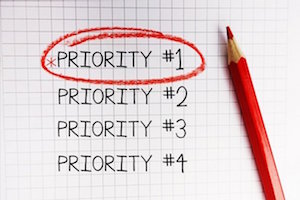Single-employer defined benefit plan interest rate stabilization and funding relief included in the American Rescue Plan Act of 2021 (ARPA) presents DB sponsors with a number of short-run decisions—some that must be made by March 31.
A recent article by OctoberThree highlights some of the issues.
Interest Rate Relief
ARPA increases the “floor” on valuation interest rates to 95% of the 25-year average for the period 2020-2025. It also places a floor on each 25-year average segment rate of 5%.
The Decision(s)
This relief applies by default in 2020, but the sponsor may elect to delay application to 2021 or 2022. And, for 2020/2021, the sponsor may apply the relief just for funding or for funding and calculation of the adjusted funding target attainment percentage (AFTAP) (used to determine whether certain benefit restrictions, including restrictions on lump sums, apply).
Amortization Relief
ARPA provides that all current shortfall amortization bases are set to zero, with 15-year amortization of shortfalls thereafter.
The Decision(s)
Relief applies by default in 2022, but the sponsor may elect application in 2019, 2020 or 2021.
Guidance Needed
However, according to that recent article by OctoberThree, implementation of the new rules, especially as they apply to 2019 and 2020, is going to require significant guidance, specifically:
With respect to interest rate relief: How do the sponsor elections work? For instance: Can a sponsor elect to apply relief in 2020 and not in 2021? Can a sponsor elect to have relief apply for funding and the AFTAP in 2020 and for funding only in 2021? Finally, what are the procedures for making an election?
With respect to amortization relief: How does the sponsor election work? E.g., how are any “retroactive” surpluses generated by the application of amortization relief in 2019 and 2020 to be treated?
Waived credit balances: First, how are previously waived credit balances for 2019/2020 that did not need to be waived to be treated? Credit balances generally do not count as plan assets for purposes of the AFTAP, and thus, in 2019 or 2020, some sponsors may have had to waive credit balances to, e.g., get a plan up to 80%. If, for example, for 2019 (if the sponsor elects 15-year amortization for that year) or 2020 (if 15-year amortization and/or interest rate relief applies) the plan is “retroactively” at or over 80% without the waiver, will the sponsor be allowed to un-do the waiver?
Second, if after the “retroactive” application of interest rate and/or amortization relief a 2019 or 2020 credit balance is created that reduces the plan’s AFTAP below, e.g., 80%, even though no benefit restrictions were imposed for that year, how is that result to be treated?
Most Urgent: Decisions to Be Made by March 31 and April 15
The article outlines a number of considerations, specifically with regard to benefit restrictions/range certification (the new interest rate rules may have the effect of changing the 2020 AFTAP, conceivably from, e.g., below 90% to 90% or above, thereby avoiding application of this rule. Or application of the new rules may allow a range certification that the plan’s 2021 AFTAP is at least 80%).
The article explains that sponsors that may be affected by these rules will want to consult with their actuary about whether and how the new rules may be applied/taken into account, and any required documentation.
As for that April 15 quarterly contribution, the article notes that sponsors that under prior rules had a 2020 shortfall should consult with their actuary about (1) whether the plan would still have had a 2020 shortfall if the new interest rate rules are applied to 2020, and (2) whether any quarterly contribution obligation may be satisfied by, e.g., a credit balance generated by the adoption of 15-year amortization for 2019 or 2020.
You can read more at http://www.octoberthree.com/stimulus-db-funding-relief-short-run-sponsor-decisions/
- Log in to post comments
